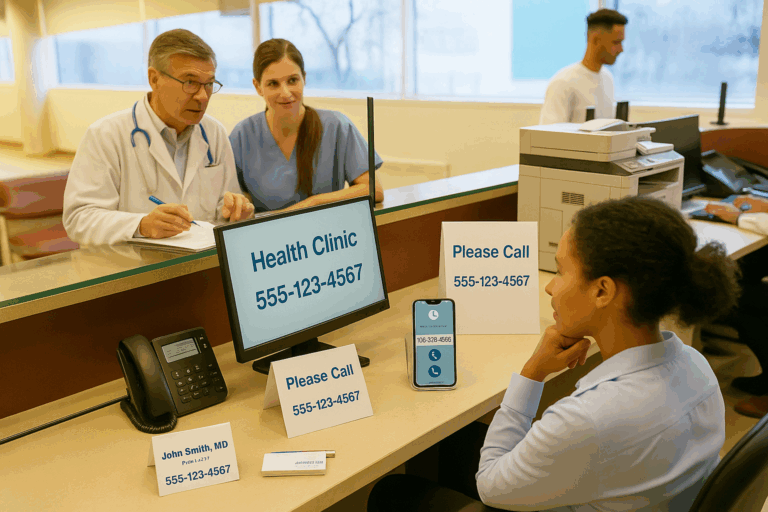Springtime in the United States brings warmer temperatures, flowers blooming and more daylight. Severe weather often rears its ugly head this time of the year, though, wreaking havoc through high winds, lightning, heavy rain and hail that sometimes precipitate power outages.
Loss of power has the potential to produce substantial— and even dangerous — operational repercussions for hospitals and physician practices. Along with disrupting services, damaging infrastructure and depleting supplies, power outages can render access to patient records impossible and delay timely care.
It’s not only spring storms that hamper healthcare providers. Equipment and hardware malfunctions and failures, cyberattacks and even human error disrupt operations within seconds. The reality is that human error and malice are the largest causes of system outages and downtimes.
Rapidly spreading wildfires a few months ago spurred medical groups into emergency response mode, resulting in evacuations, displacement of patients and staffing shortages. Although the CMS Emergency Preparedness Rule requires all hospitals and healthcare facilities to develop emergency plans using an all-hazards approach to ensure adequate planning for natural and man-made disasters, unplanned downtime still occurs.
Decreasing the Cost of Downtime – Is Cloud Computing the Answer?
Approximately 95 percent of businesses experience unexpected server downtime, with the average outage lasting 117 minutes. The average downtime for healthcare entities costs $7,900 per minute and a staggering $690,000 per outage.
For higher-risk healthcare enterprises, downtime can eclipse an astounding $5 million an hour — not including revenue loss and hefty fines for noncompliance with HIPAA rules and regulations. These costs don’t take into account a damaged reputation and diminished patient trust, which can be detrimental to healthcare providers for years to come. For smaller healthcare practices, extended downtime can force them to close permanently due to a lack of financial resources.
Turning to cloud-based technology for disaster recovery helps healthcare enterprises of all sizes prevent downtime and subsequent data loss while maintaining HIPAA compliance. It supports emergency response by enabling remote access to data, backing up patient records and keeping information secure at all times.
Supporting emergency response in healthcare doesn’t require a significant investment. Cloud-based phone systems powered by voice over internet protocol (VoIP) provide reliable disaster recovery, unlimited backup space, reduced storage and operating costs, improved scalability and flexibility and remote file sharing. All of this comes without the need for expensive hardware, routine maintenance, discontinued manufacturer support, high local and international call rates, lease line charges or hidden fees.
A bonus? Cloud-based VoIP communication platforms don’t need downtime to install upgrades.
Three Key Features of RingRx OnCall That Equip Healthcare Providers for Emergency Response
RingRx’s business-class phone system is designed specifically for healthcare. It allows for integrations with existing IT solutions, ensuring continuity with current frameworks, preserving staff competencies and reducing deployment costs.
We recognize the challenges faced by many hospitals and healthcare practices, and we have designed our communications system to address these issues. It includes numerous features, such as on-call capabilities, to empower healthcare providers in supporting emergency response and minimizing costly downtime.
Three features of RingRx OnCall best suited to maintaining secure communication with patients during an emergency are call routing, personalized profiles and shift reminder notifications.
Feature #1: Call Routing
After-hours access to primary care practices has been shown to decrease the number of emergency department visits and lessen unmet medical needs. To enhance patient access during and shortly after a natural disaster or similar emergency, our HIPAA-compliant platform directs callers after office hours to the appropriate on-call medical professional.
RingRx’s advanced Call Routing feature screens and directs urgent calls to the on-call provider while sending non-urgent calls to voicemail boxes or other pre-determined destinations. By connecting callers with after-hours providers through sophisticated customization features, it leads to fewer errors and reduced response times.
Feature #2: Personalized OnCall Profiles
Real-time access is a vital aspect of after-hours provider-patient communication, making it important for providers to choose how and when they prefer to be contacted while on call. Our VoIP phone system allows OnCall users to specify which phone should reach them and whether to keep the caller on the line or take a message. Users can customize their OnCall profile to receive notifications via text or email when they get a new message.
By allowing healthcare providers to create a custom profile, the RingRx phone system ensures that calls are managed effectively while minimizing administrative headaches and patient delays. Additionally, it features a robust calendar with current scheduling information, enabling physicians and their staff to access this data through a single platform.
Feature #3: Shift Reminder Notifications
Even the most organized healthcare professionals can feel frazzled during an emergency. RingRx alerts practice or hospital staff when their scheduled shift is about to start and automatically notifies them of any gaps in shift coverage, ensuring that their patients are covered 24/7.
One-time shift notifications occur only once and never again, while repeated shifts are identical ones that recur according to a weekly schedule. This feature, combined with the OnCall profiles, offers hospitals and physician practices a customizable system tailored to organizational needs.
Is your healthcare enterprise prepared to deliver uninterrupted patient care, no matter the location or time – even during emergencies? Try a complimentary 14-day RingRx trial to see how our customizable VoIP solutions can help you maintain consistent communication 24/7.




